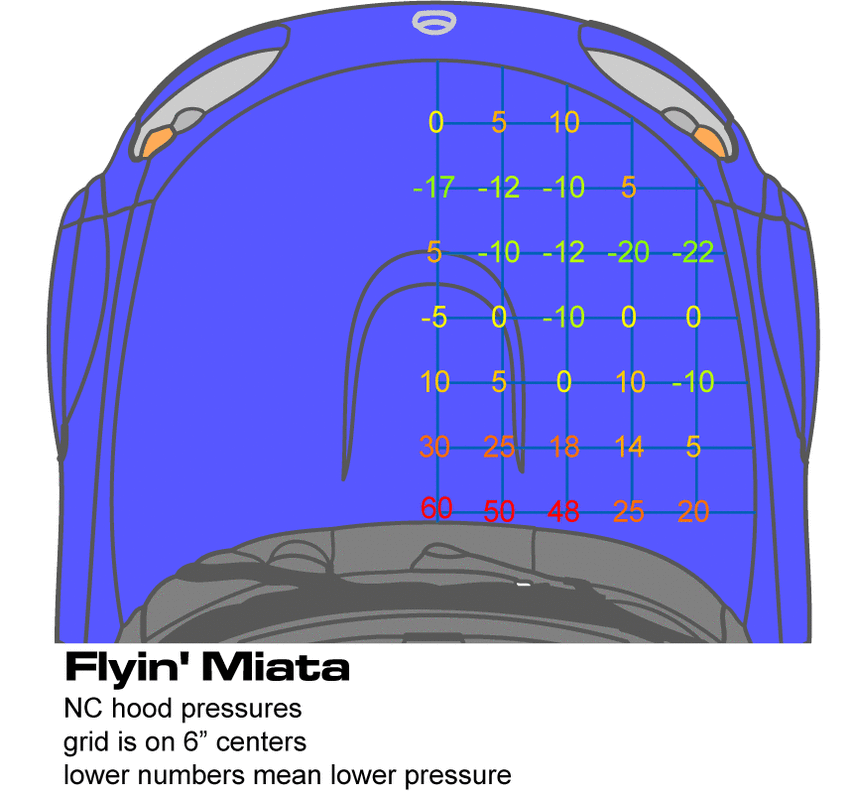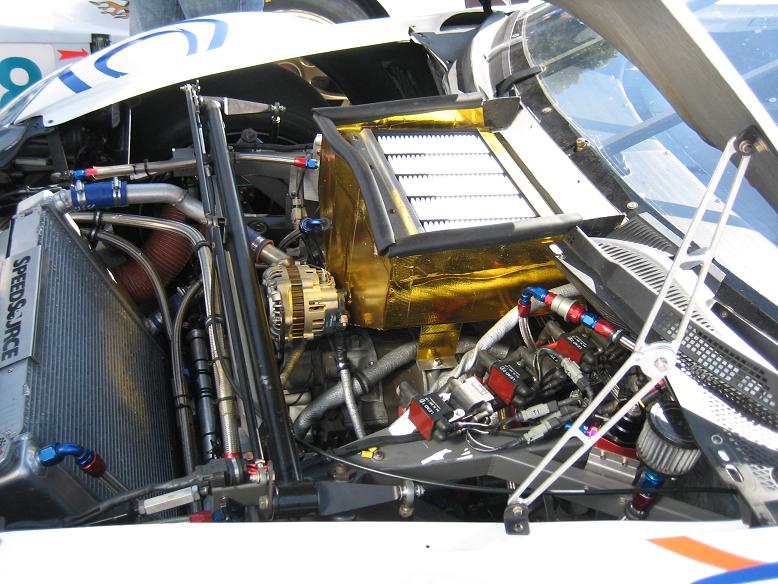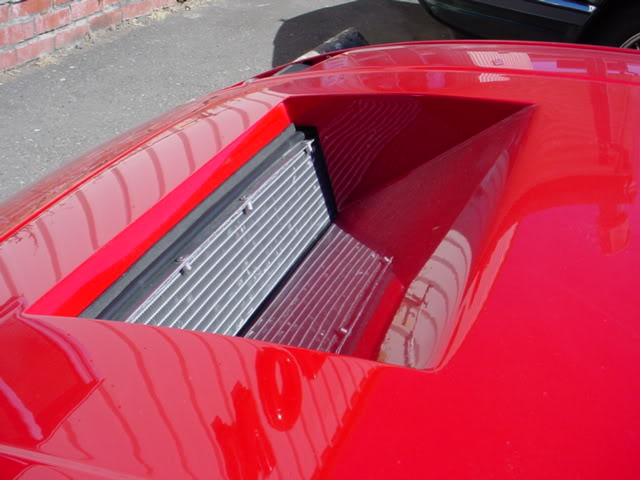Cooling Modifications
Water Pump
For the Series1, there is only 1 aftermarket water pump "upgrade" available, the ReMedy Water Pump from Mazmart. The OEM water pump starts to cavitate at about 7,300rpm, and it gets significantly worse from there. The ReMedy Water Pump is designed to flow significantly smoother than the OEM pump, and eliminate cavitation at high RPMs. It successfully accomplishes this, however, it has been proven to flow much less than the OEM pump at all RPM. Better flow means more stabilized temperatures, so it is really questionable if there is an actual cooling gain here. The ReMedy Water Pump DOES draw much less power than the OEM pump, so if the coolant flow reduction is safe for your driving, you can pick up about 5hp at peak by switching to it.
The Series2 OEM water pump is significantly better across the board, but is not compatible with the Series1 front cover. Perhaps eventually someone will figure out how to adapt the impeller from the Series2 water pump to a Series1 water pump, but it has not happened yet.
For the Series1, there is only 1 aftermarket water pump "upgrade" available, the ReMedy Water Pump from Mazmart. The OEM water pump starts to cavitate at about 7,300rpm, and it gets significantly worse from there. The ReMedy Water Pump is designed to flow significantly smoother than the OEM pump, and eliminate cavitation at high RPMs. It successfully accomplishes this, however, it has been proven to flow much less than the OEM pump at all RPM. Better flow means more stabilized temperatures, so it is really questionable if there is an actual cooling gain here. The ReMedy Water Pump DOES draw much less power than the OEM pump, so if the coolant flow reduction is safe for your driving, you can pick up about 5hp at peak by switching to it.
The Series2 OEM water pump is significantly better across the board, but is not compatible with the Series1 front cover. Perhaps eventually someone will figure out how to adapt the impeller from the Series2 water pump to a Series1 water pump, but it has not happened yet.
Thermostat
Similar to the water pump, the only aftermarket upgrade available is the ReMedy thermostat from Mazmart, which has a cooler opening temperature than the OEM thermostat. The benefit of a lower temp thermostat is that it will start flowing water to the radiator sooner. The OEM thermostat starts opening at 180F and should be fully open by 205 or so. The Mazmart thermostat starts opening at 170F and is fully open by 190F. You can test any thermostat easily by using a pot of boiling water and a laser/IR thermometer. If your water temp is having trouble getting down to the opening temp, you could have a slow or sticking thermostat, or your radiator can't shed the heat fast enough.
Similar to the water pump, the only aftermarket upgrade available is the ReMedy thermostat from Mazmart, which has a cooler opening temperature than the OEM thermostat. The benefit of a lower temp thermostat is that it will start flowing water to the radiator sooner. The OEM thermostat starts opening at 180F and should be fully open by 205 or so. The Mazmart thermostat starts opening at 170F and is fully open by 190F. You can test any thermostat easily by using a pot of boiling water and a laser/IR thermometer. If your water temp is having trouble getting down to the opening temp, you could have a slow or sticking thermostat, or your radiator can't shed the heat fast enough.
Radiator
The stock radiator is sufficient for most cooler climates and normal street driving, but can get overtaxed in track driving and street driving in hotter climates. This is less of a problem with the radiator itself, and more of a problem of air flow though, so before you upgrade your stock radiator, make sure that the air is getting fed to it correctly, and can escape from it completely as well. The common problem points are:
Also, be aware of anything that decreases pressure in front of the radiator, or increases it behind the radiator. Radiators work on air moving through them, and in order for that to happen there needs to be higher pressure in front of the radiator than behind. Since air builds up pressure in front as you drive, that part is usually taken care of, but then the air packs up the engine bay after flowing through the radiator, which limits how big of a pressure difference you can really achieve. Removing the foam around the radiator allows the pressure to equalize without going through the radaitor, reducing radiator efficiency. This same problem exists when the splash pan is removed.
The stock radiator is sufficient for most cooler climates and normal street driving, but can get overtaxed in track driving and street driving in hotter climates. This is less of a problem with the radiator itself, and more of a problem of air flow though, so before you upgrade your stock radiator, make sure that the air is getting fed to it correctly, and can escape from it completely as well. The common problem points are:
- The splash pan sags as speeds increase, even normal legal speeds, allowing air flow under the radiator, which decreases it's effectiveness.
- The foam around the radiator sides is there to help keep air flow from escaping around the sides of the radiator, and can degrade or fall out over time
- The fans on the back of the radiator are prone to getting blocked or jammed from debris, usually the rubber grommets from the air box but sometimes other items.
- The stock air box and battery box create lots of blocking, restricting the escaping air flow. Changing to an aftermarket intake, removing the air box, AND venting the hood properly is the easiest solution to this, though keep in mind the intake modification factors above, and that you will have to vent the hood properly to make this worth it. Proper hood venting is covered below.
Also, be aware of anything that decreases pressure in front of the radiator, or increases it behind the radiator. Radiators work on air moving through them, and in order for that to happen there needs to be higher pressure in front of the radiator than behind. Since air builds up pressure in front as you drive, that part is usually taken care of, but then the air packs up the engine bay after flowing through the radiator, which limits how big of a pressure difference you can really achieve. Removing the foam around the radiator allows the pressure to equalize without going through the radaitor, reducing radiator efficiency. This same problem exists when the splash pan is removed.
Coolant Passages
If you are having the engine rebuilt, many engine builders offer to re-work the coolant passages for better heat transfer and more flow. There are no real tests measuring the effectiveness of this, but the theory is sound.
If you are having the engine rebuilt, many engine builders offer to re-work the coolant passages for better heat transfer and more flow. There are no real tests measuring the effectiveness of this, but the theory is sound.
Splash Pan
The OEM splash pan can start sagging under the high air pressure in front of the radiator, and can push it down, allowing air to bypassing the radiator underneath. This problem is increased as speeds go up, as well as the AC condenser or radiator vanes get slowly flattened by road pebbles and bugs. There are a few solutions for this, including metal splash pans, and brackets that anchor it to the bottom of the radiator.
The OEM splash pan can start sagging under the high air pressure in front of the radiator, and can push it down, allowing air to bypassing the radiator underneath. This problem is increased as speeds go up, as well as the AC condenser or radiator vanes get slowly flattened by road pebbles and bugs. There are a few solutions for this, including metal splash pans, and brackets that anchor it to the bottom of the radiator.
Fan Trigger Temp
The OEM fan trigger temp is set too high, and can let your engine run hotter than ideal when idling or low speed driving. There are several methods to reducing the fan trigger temp, and is always recommended. There is no drawback, and plenty of benefit.
Some of the methods:
The OEM fan trigger temp is set too high, and can let your engine run hotter than ideal when idling or low speed driving. There are several methods to reducing the fan trigger temp, and is always recommended. There is no drawback, and plenty of benefit.
Some of the methods:
- An ECU reflash that lowers the stored ECU trigger temp (common with AccessPORT flashes)
- A simple controller
- A more complex but good variable controller (such as is in this DIY: http://www.rx8club.com/do-yourself-f...roller-123326/)
Hood Venting
Hood venting is something a lot of people do as an appearance modification, but if done properly, it can be a significant aid to cooling. The key thing to remember is that it's all about pressure differentials. The radiator needs high pressure in front, and low pressure behind to work. The greater the pressure difference between the two, the more effective the radiator will be. The biggest problem point for what increases pressure behind the radiator is the engine bay itself. Air doesn't flow well through the engine bay, so it stalls there, increasing the air pressure in the engine bay behind the radiator. Proper hood venting will reduce this pressure significantly, improving how well the radiator works.
So where do you vent it?
Again, it comes back to pressure differentials. You want a location above the hood with a low pressure, and an area under the hood with a high pressure to maximize how much air will move through the vents out of the car. Look at this pressure map of a 2006 Miata hood:
Hood venting is something a lot of people do as an appearance modification, but if done properly, it can be a significant aid to cooling. The key thing to remember is that it's all about pressure differentials. The radiator needs high pressure in front, and low pressure behind to work. The greater the pressure difference between the two, the more effective the radiator will be. The biggest problem point for what increases pressure behind the radiator is the engine bay itself. Air doesn't flow well through the engine bay, so it stalls there, increasing the air pressure in the engine bay behind the radiator. Proper hood venting will reduce this pressure significantly, improving how well the radiator works.
So where do you vent it?
Again, it comes back to pressure differentials. You want a location above the hood with a low pressure, and an area under the hood with a high pressure to maximize how much air will move through the vents out of the car. Look at this pressure map of a 2006 Miata hood:
You can see that the lowest pressure is on the front of the hood, behind the bumper, and the highest pressure is up against the windshield. Yes, this isn't an RX-8 pressure map (I haven't seen someone do one for an RX-8 yet), but all cars have similar pressure maps that shift around based on their actual shapes. This means that propping open the back of the hood is BAD, and doesn't actually work to cool anything down. At best it will be not much airflow at all, at worst it will INCREASE the pressure in the engine bay, hurting cooling. The low pressure zone up front is much much better, and this is why you see the vents there for race cars and the few factory cars that have vented hoods, like the Evo.
Note: Any louvers or 'lip' in front of hood vents are designed to provide a sharp decrease in air pressure behind that edge, which aids in transfering air out of the engine bay by increasing the difference in pressure. They also tend to smooth the airflow better, which has aerodynamic drag benefits.
Note: There are cars with what appear to be vents toward the rear of the hood, like many Mercedes. This are NOT vents. They are intakes, usually for supplemental cooling or for the HVAC system. In fact, if you could re-work the RX-8's intake to have the pickup point at the base of the windshield, you could see some 'ram-air' gains, because of the higher pressure air there. Look at how the Speedsource RX-8 Rolex cars took advantage of it:
Note: Any louvers or 'lip' in front of hood vents are designed to provide a sharp decrease in air pressure behind that edge, which aids in transfering air out of the engine bay by increasing the difference in pressure. They also tend to smooth the airflow better, which has aerodynamic drag benefits.
Note: There are cars with what appear to be vents toward the rear of the hood, like many Mercedes. This are NOT vents. They are intakes, usually for supplemental cooling or for the HVAC system. In fact, if you could re-work the RX-8's intake to have the pickup point at the base of the windshield, you could see some 'ram-air' gains, because of the higher pressure air there. Look at how the Speedsource RX-8 Rolex cars took advantage of it:
Photo Credit to RX8Club.com's brillo
Yes, that's the air filter in the back, up against the hood. There is actually an opening to let it soak in as much air as it can. (And yes, that is a stock air filter for a street RX-8, our filters flow that well.)
If you are planning on building a track car, and want to maximize cooling as much as possible, you may want to consider ducting ALL radiator airflow out of the hood, like this FD RX-7:
If you are planning on building a track car, and want to maximize cooling as much as possible, you may want to consider ducting ALL radiator airflow out of the hood, like this FD RX-7:
It's not something many cars can do thanks to engine placement or other engine bay items that can't be moved, but the RX-8 (and RX-7s) are ideally suited to be able to do this easily. If you do this, you can expect to be able to maintain thermostat temperatures on track, and possibly without any other cooling upgrades.


